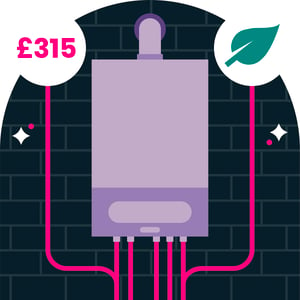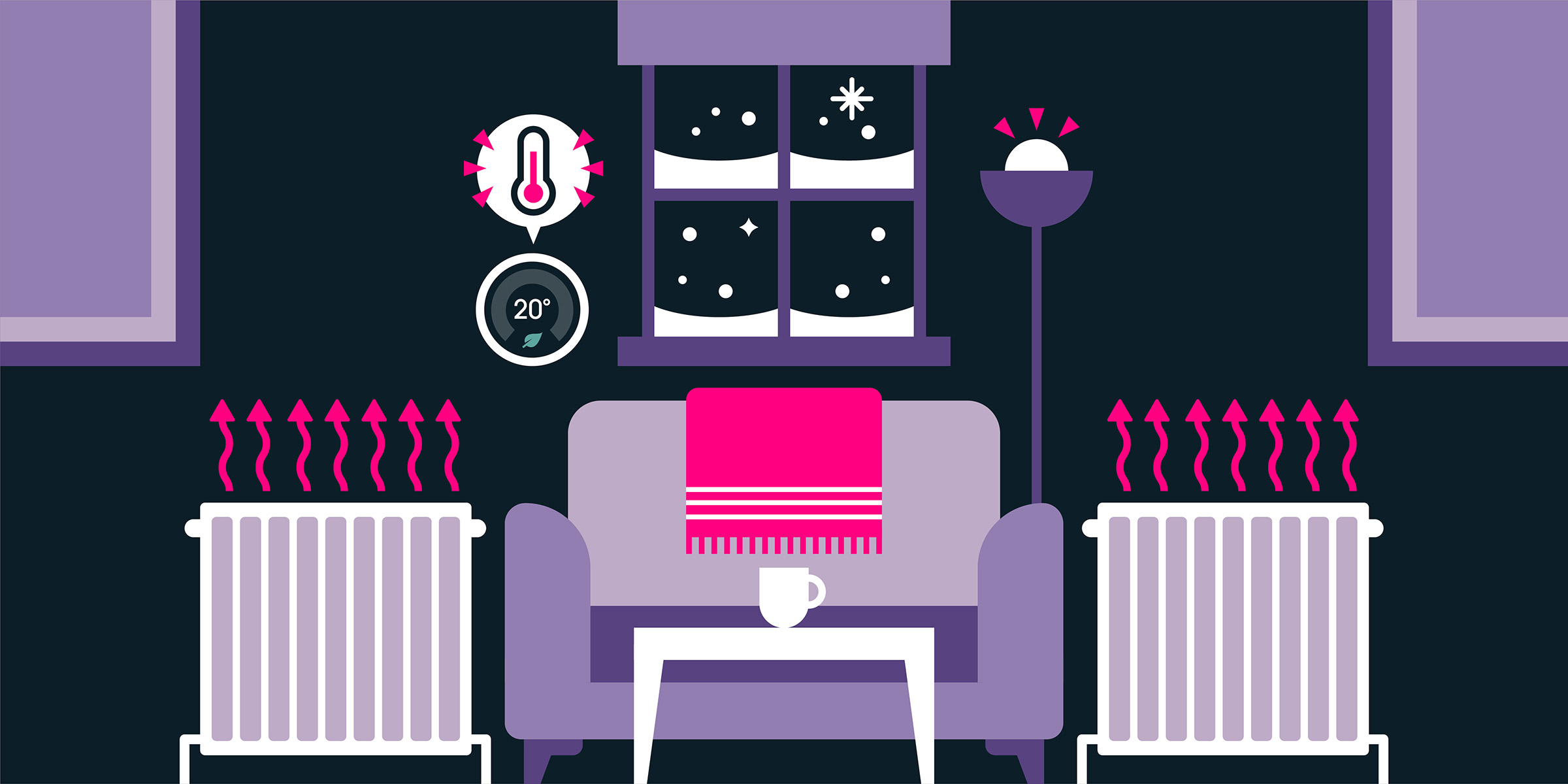When to turn your heating on and other heating tips
If there’s one sure sign that marks the end of summer and the start of the colder parts of the year, it’s the annual debate about when it’s OK to turn on your heating again.
While some people may happily fire up their central heating at the first sign of cooler weather, for others, turning it on for the first time each year is an agonising decision, especially if money is tight.
Some people also simply feel the cold more.
For others, it’s about stubbornly avoiding turning on the heating for as long as possible, as a matter of principle. They’ll be layering up the jumpers long before they fire up the boiler.
As well as creating grief in households across the UK, the debate usually rages across social media too, with some brave soul admitting they’ve turned on their heating sooner than is deemed acceptable by others.
The problem is, once your central heating is on, you’re likely to keep it running – perhaps on a timer – through until the warmer weather starts next year.
The reality is that it’s entirely up to you when you turn on your heating. But by taking some heat-saving steps you may be able to hold your ground just a little longer, or at least reduce your costs and impact on the environment when you do give in and turn on your heating.
Put on a jumper
Yes, yes, everyone knows this. But it would be remiss not to include a reminder to add a few layers before resorting to the heating. Put on a warm jumper, some slippers and snuggle down under a blanket in the evening. It’s money-saving bliss.
Gender temperature wars...
Studies have confirmed what you may have experienced in your own household: men are more likely to say the house is too hot, while more women feel their homes are too chilly.
In fact, a 2018 survey of 2,000 cohabiting couples found that around half had quarrelled with their partner over the temperature of their home.
Draught-proof your house
There’s no point in spending loads of money on heating if all of that warmth simply seeps away.
One sure fire way to avoid that is to draught-proof windows, doors, floorboards, loft hatches and any other gaps. Whilst rooms like kitchens and bathrooms need provision for adequate ventilation, they too should be draught-free.
You’re likely to need to an initial spend of between £85 and £275 for materials and professional installation, but it’s worth the effort as it could save you £10 to £30 a year on heating bills.
.jpg?width=300&name=When%20is%20it%20OK%20to%20turn%20your%20heating%20on%201%20(3).jpg)
Place tinfoil behind your radiators
Putting foil behind radiators on external walls is a quick and cheap way to save money on your bills.
You can buy specialist radiator reflector foils - some of which claim to reflect 95% of the wasted heat back into your room - or if you want to stick with normal foil, Groundwork UK suggests sticking it to a piece of cardboard to make it easier to fit.
Whether or not you opt for foil, one other important part of getting the most out of your radiators is to ‘bleed’ them. This serves to ensure that hot water can circulate effectively. You’ll know a radiator needs bleeding if it feels hot at the bottom but cold at the top, takes a long time to warm up or if it’s making gurgling noises.
Also, make sure your furniture isn’t jammed up against your radiators; otherwise it will be absorbing heat rather than letting it circulate the room properly.
A compromise: turn your heating on, but lower
Perhaps, if it’s getting too cold, then you could compromise and run the heating at a lower temperature than you might have done previously. Aim for between 18 and 21 degrees.
Turning the temperature down by just 1 degree could save you up to £80 and reduce your home’s carbon dioxide emissions by up to 320kg, all without you even noticing.
If your new lower temperature feels a little chilly, then compare it with the average home temperature in 1970: a bracing 13.7C.

Service or upgrade your boiler
Before you turn on your heating, have your boiler serviced by a qualified engineer.
Or if you already know that your boiler is old and unreliable, then consider an upgrade.
Investing in a more eco-friendly modern boiler can be well worth it. For example, if you live in a detached house and have an old G rated gas boiler, you could save £315 a year by upgrading to a new A-rated condensing boiler with a programmer, room thermostat and thermostatic radiator controls. You’ll need to spend around £2,300 initially, so it’s a long-term investment.
You could, however, go one step further and do away with a gas-powered boiler altogether. Sooner or later, everyone is going to have to consider alternatives to gas for heating their home. With low carbon heating improvements qualifying for the Green Homes Grant it’s a great time to be making these types of upgrades.
Now is the time to switch suppliers!
The start of the cold weather - and the part of the year when your energy bills really shoot up - is a great time to find a better energy deal.
Switching energy supplier is quick, straightforward and could save you around £300 on your annual energy bill.
Loop can help. It enables simple and timely switching, based on accurate data. It will show you all the available tariffs - the so-called ‘whole of market’ - including better value options with your own supplier.
Crucially, all of our calculations and suggestions are based on your actual electricity usage data, rather than estimates.
.jpg?width=300&name=When%20is%20it%20OK%20to%20turn%20your%20heating%20on%203%20(1).jpg)
Insulate pipes
Insulating pipes can be an easy way to reduce heat loss, and you can do it yourself.
Depending on the size of your house, you’ll probably only need to spend £20 or so on foam lagging, which you’ll soon make back as you could save as much as £7 a year on your energy bills. Lagging also reduces the chances of pipes getting too cold and bursting during colder months.
Only heat rooms you’re using
Many people will control their central heating by using a simple timer, combined with a thermostat, to set the temperature they desire throughout their house.
But that means they end up paying to heat rooms they aren’t using.
To help you more easily control your heating, you could consider buying a smart thermostat, which will enable you to control your heating, and hot water, remotely using your smartphone.
Get financial support
If you’re struggling to pay your bills, see if you qualify for state financial support. This includes:
- Winter fuel payments: a payment of between £100 and £300, tax-free, to help towards winter heating bills.
- Warm home discount: a payment of £140 which is reduced from your electricity bill.
- Cold Weather Payment: an automatic payment of £25, for people who claim certain means-tested benefits, if the average temperature in their area drops below zero for seven days in a row.
• • •
With Loop, you can find out how you use electricity, then make smart decisions about using less - click here to find out more. We have a risk-free, no-quibble, money-back guarantee as standard, so what's to lose...apart from some £££ from your bills and some weight from your carbon footprint?







